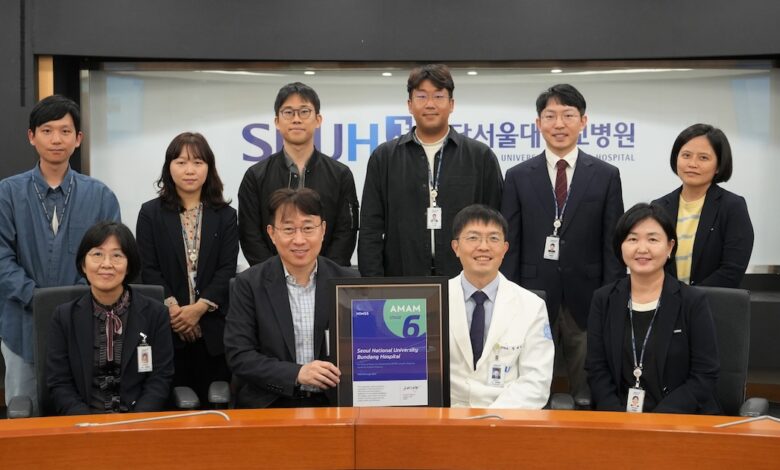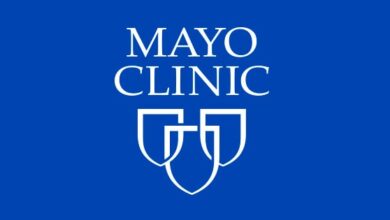Seoul National University Bundang Hospital bags Stage 6 AMAM

Seoul National University Bundang Hospital in Seoul, South Korea has been recently validated for Stage 6 of the classic HIMSS Analytics Maturity Assessment Model.
AMAM measures an organisation’s capabilities and advances in healthcare analytics. A new, modernised version of this model – dubbed AMAM24 – was launched at the recently concluded HIMSS24 APAC conference.
WHY IT MATTERS
SNUBH credits its latest achievement to its prior experience getting validated four times for Stage 7 of the HIMSS Electronic Medical Record Adoption Model. Its Data Convergence Team under the Office of Hospital Information led this process and ensured close collaboration between the medical informatics and hospital operation teams.
One of the highlights of the validation is the CDW 3.0, an upgraded version of a clinical data warehouse that the hospital had used for a decade. SNUBH embarked on this upgrade two years ago to create “an advanced, open-source data warehouse equipped with machine learning capabilities.”
Following the launch of the CDW 3.0 in October last year, SNUBH staff reported an increase in data retrieval and analysis speeds with the use of the system. The CDW now has a user-friendly interface that allows step-by-step patient cohort definition. It also streamlines data visualisation; enhances data security with masking and anonymisation modules; standardises unstructured data and aligns with international standard codes; and provides a single source of learning resources, including pre-defined datasets for ML/AI research.
In their validation, HIMSS noted that the consolidated CDW was “accessible, convenient, and user-friendly.” “This makes it a tremendously powerful tool for executives and clinicians to view, understand and analyse data, and generate insights to improve clinical care and organisational performance,” Andrew Pearce, HIMSS VP Analytics and Global Advisory Lead, commented.
Validators also commended SNUBH for tracking and reporting over 200 indicators via several dashboards. An example of this is the dashboard for the Rapid Response System (RRS). The hospital first set up the RRS in 2012 to resolve usual delays in responding to patient deterioration.
Now in its second phase of implementation, the RRS operates round-the-clock with 15 nurses. The hospital observed a “significant decrease” in cardiopulmonary resuscitation events in the general wards over a decade since the system was first activated. Another notable improvement is the RRS dashboard facilitating a prompt transfer of patients to the ICU.
In addition, SNUBH demonstrated during its AMAM validation the implementation of an AI-based ECG interpretation tool on its HIS, which is now used to generate quantitative risk assessments of cardiac events and assist with diagnosing arrhythmias and other related emergency conditions.
The project aims to address delays in detecting cardiac issues and enable the creation of personalised treatment plans. Based on a test pilot prior to its initial integration in April this year, the AI tool showed proficiency in rhythm analysis and classification of 10 identified digital biomarkers.
Following clinical integration, SNUBH clinicians highlighted the tool’s ability to diagnose severe hyperkalemia early. Evaluation studies are ongoing to further prove its effectiveness.
After this AMAM validation, SNUBH is moving on with plans to strengthen its enterprise data warehouse and improve its operational data analysis capabilities, focusing on post-monitoring systems to incorporate the analytical life cycle – which is now part of the modernised AMAM.
THE LARGER TREND
Fellow Korean hospital, Samsung Medical Center, became the first hospital in Asia-Pacific to get validated for Stage 7 of the HIMSS AMAM in May. It was also the first in the region to achieve Stage 6 last year.
Outside South Korea, China Medical University Hospital of Taiwan is also currently validated for Stage 6 HIMSS AMAM.
Meanwhile, SNUBH underwent its fourth validation for the HIMSS EMRAM late last year. The hospital was the first outside the United States to be validated for Stage 7 of this model in 2010.
ON THE RECORD
“SNUBH has consistently built its data analysis capabilities, which have been progressively validated through our previous four EMRAM certifications. I am delighted that we have once again affirmed our data analysis competency through this AMAM Stage 6 certification. This achievement not only recognises our current capabilities but also sets the stage for our continued advancement in leveraging data for improved healthcare delivery and operational excellence,” Dr Junghan Song, president and CEO of SNUBH, said in a statement.
“We specifically chose HIMSS AMAM validation to strengthen our data-driven decision-making abilities and evaluate the current state of our data-related platforms. SNUBH has evolved alongside HIMSS certifications, and we are committed to continuing this journey into the future. As highlighted at HIMSS APAC 2024, the newly modernised AMAM validation is well-designed. Through this framework, we once again aim to drive innovation in data-driven decision-making across both our clinical and operational domains,” Dr Seyoung Jung, CIO of SNUBH, also commented.



